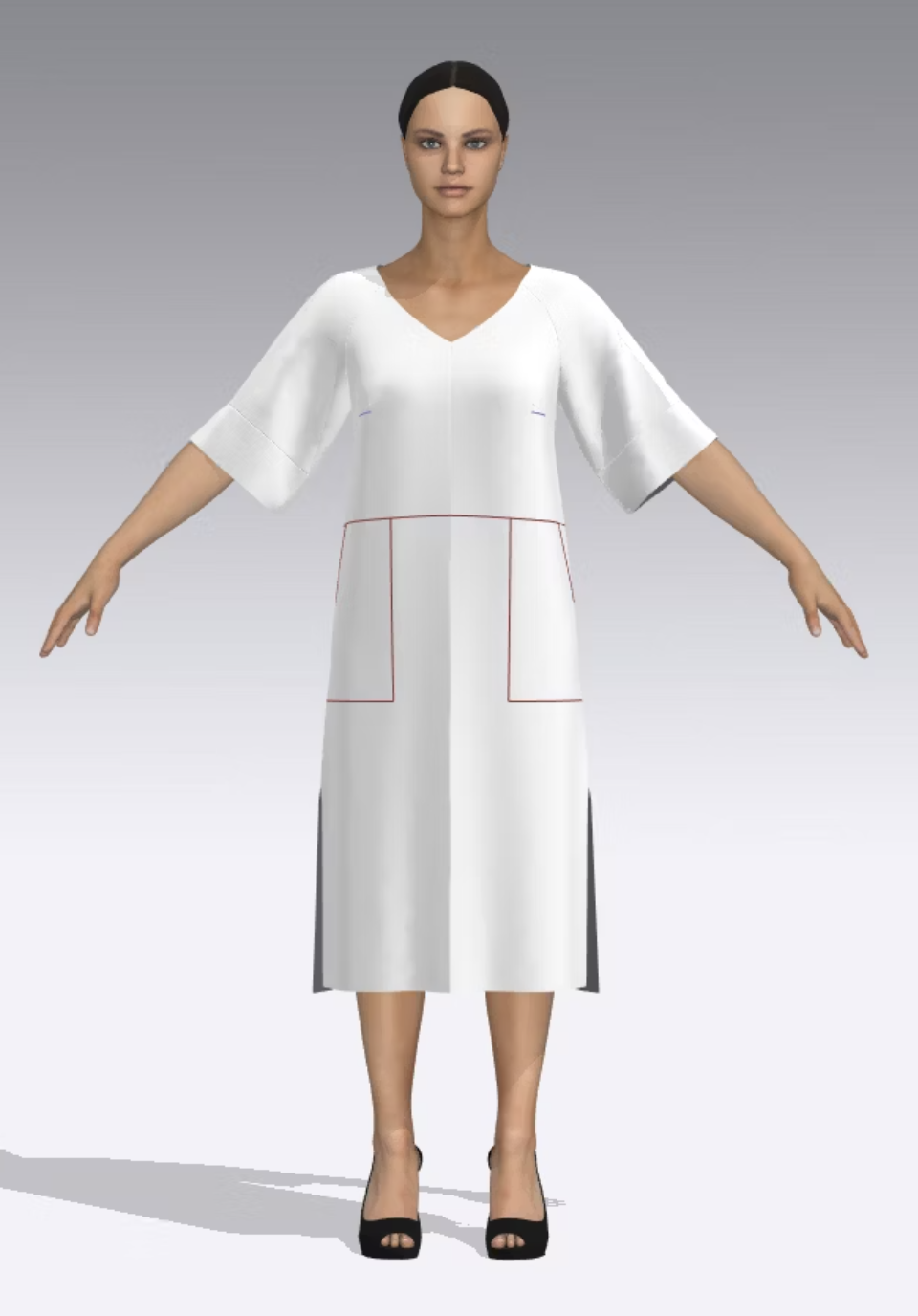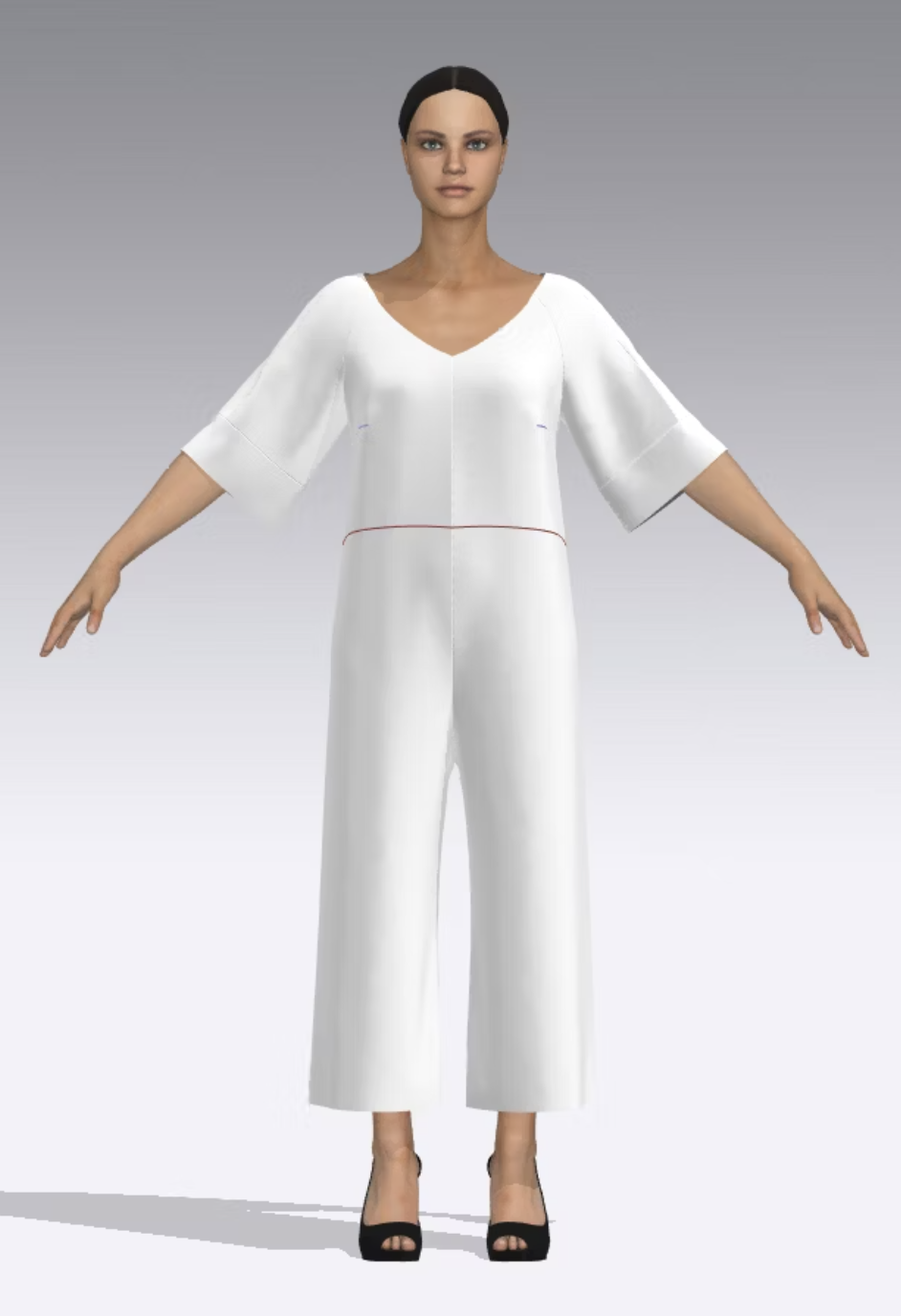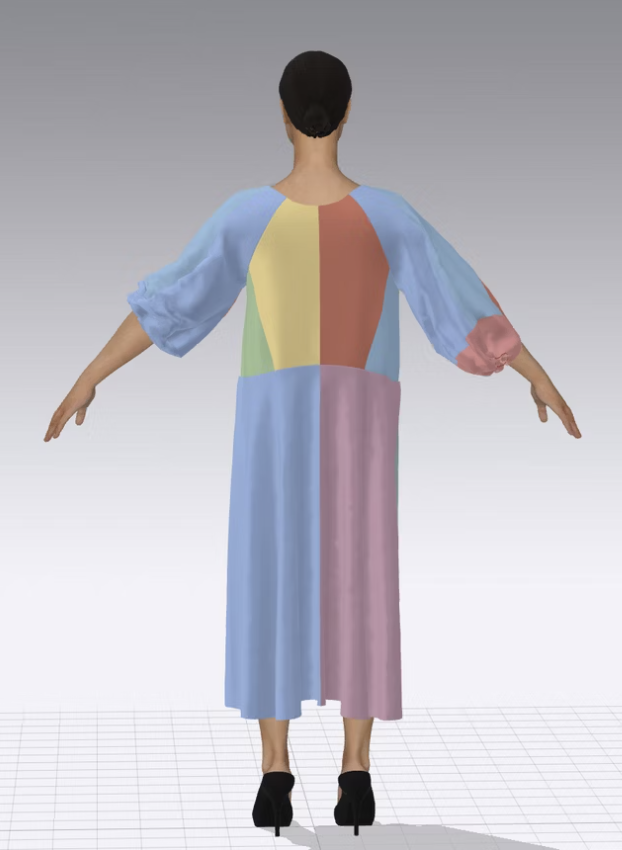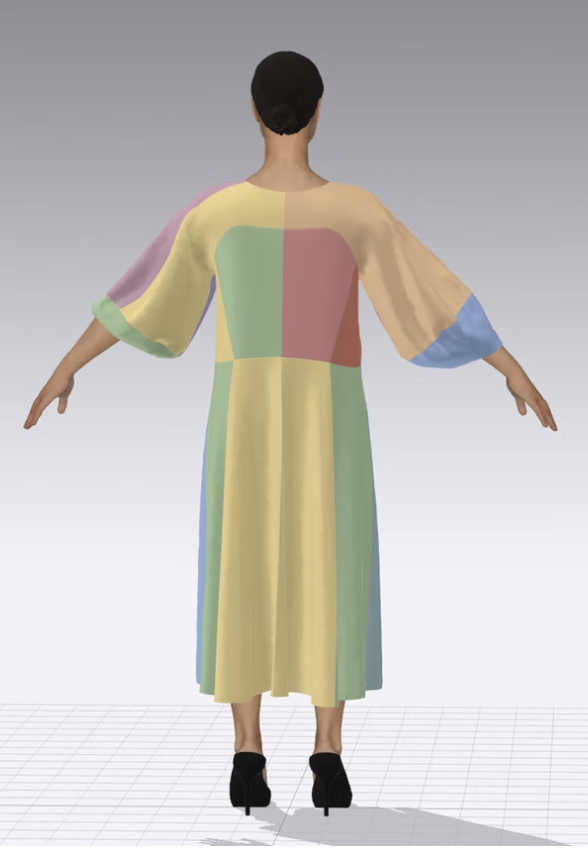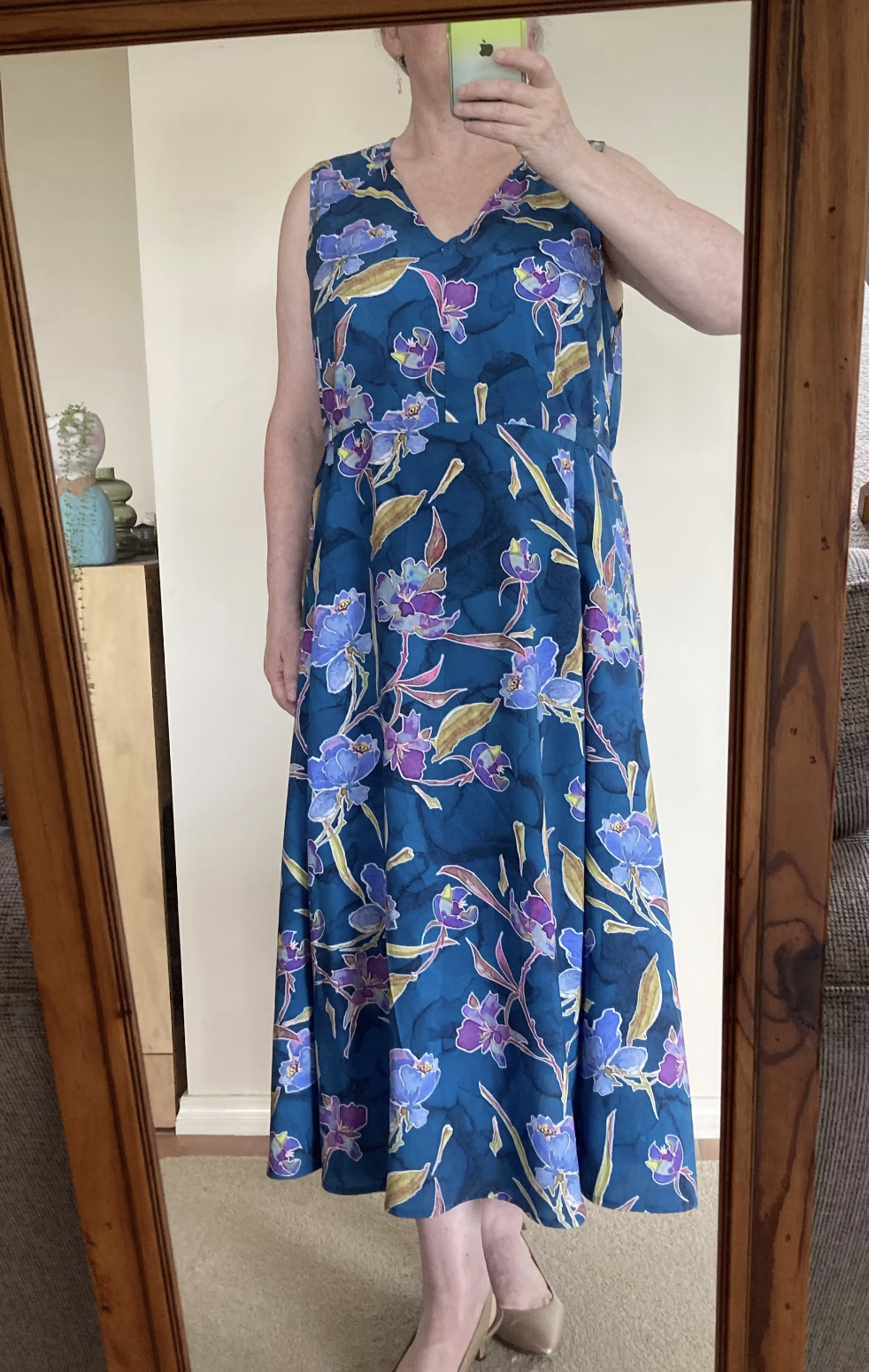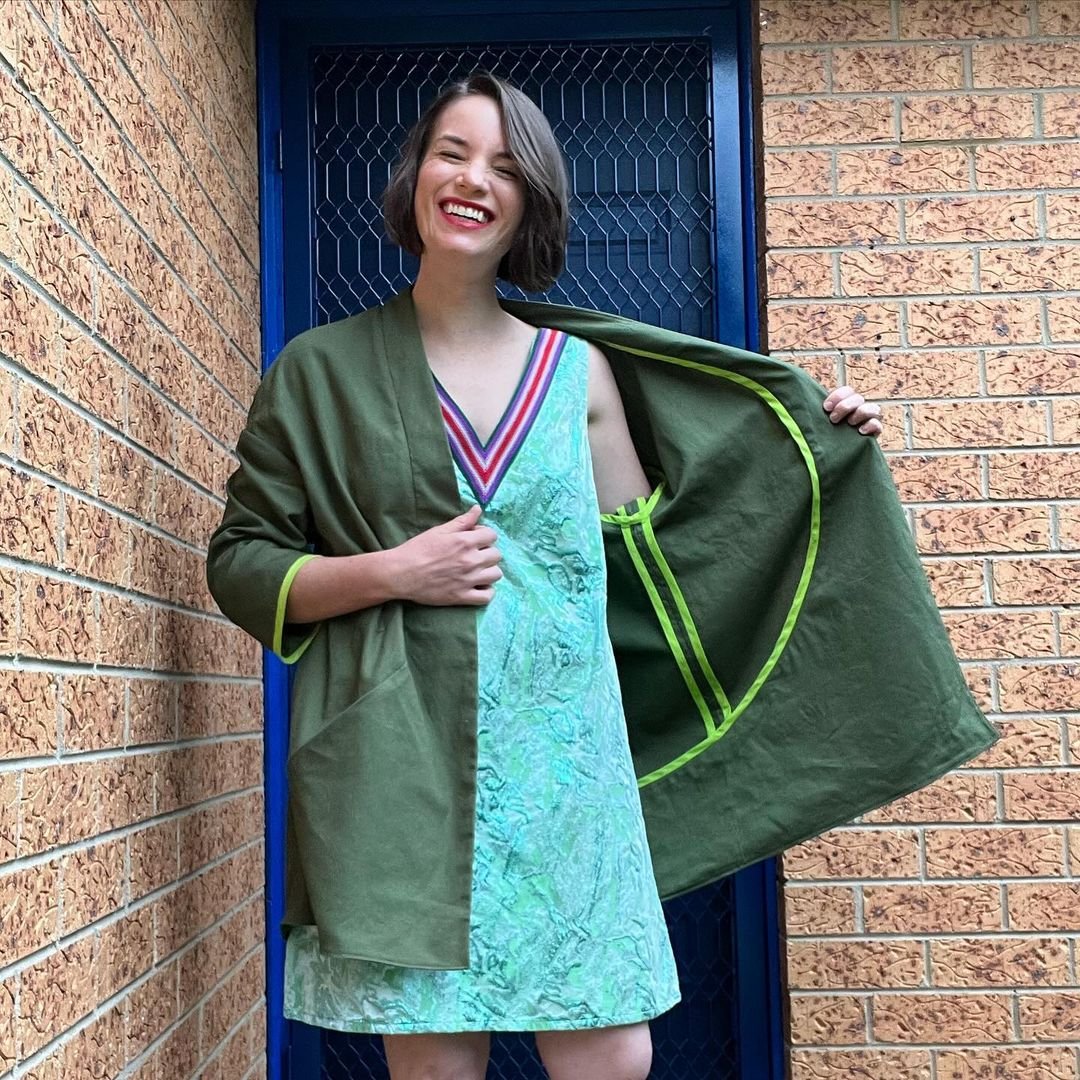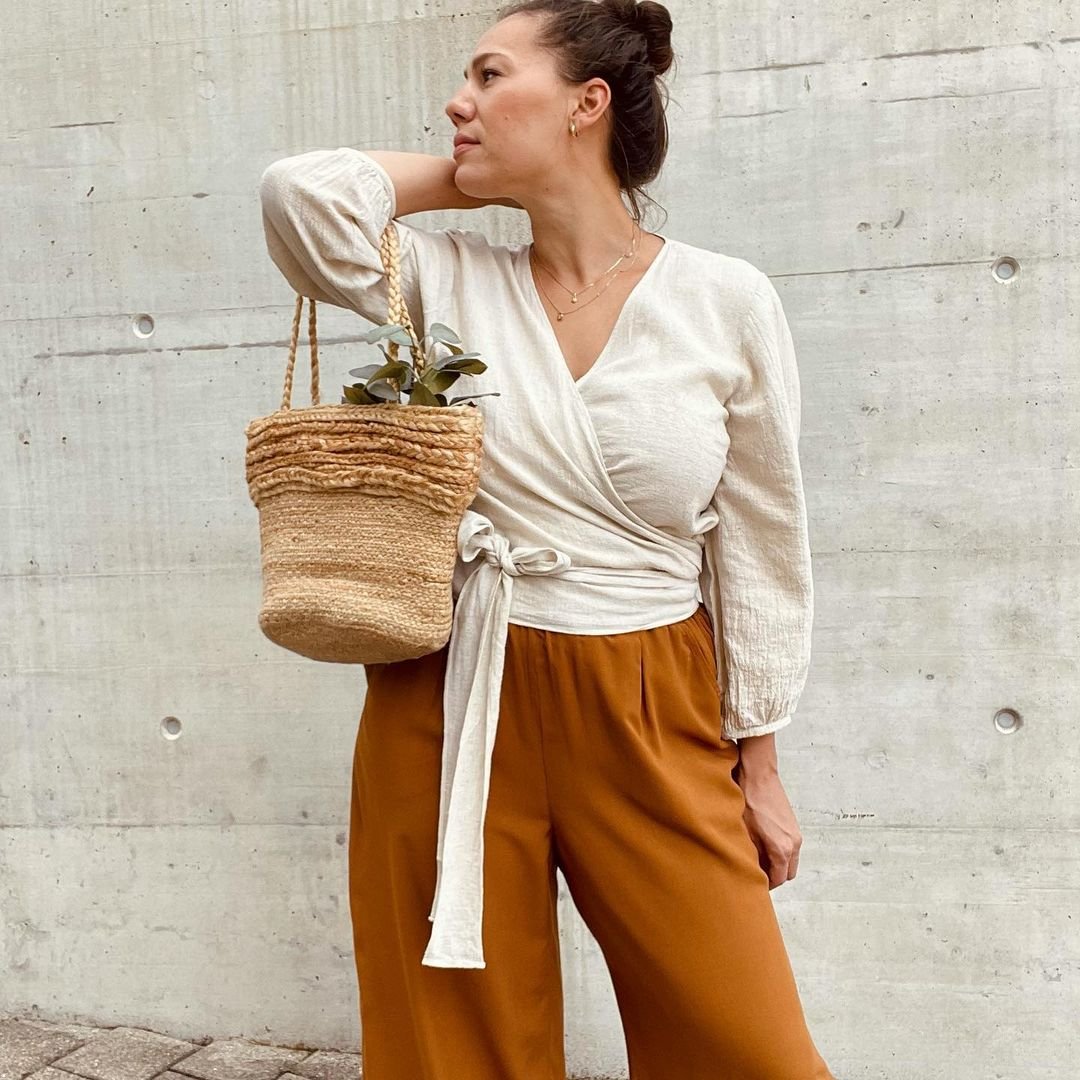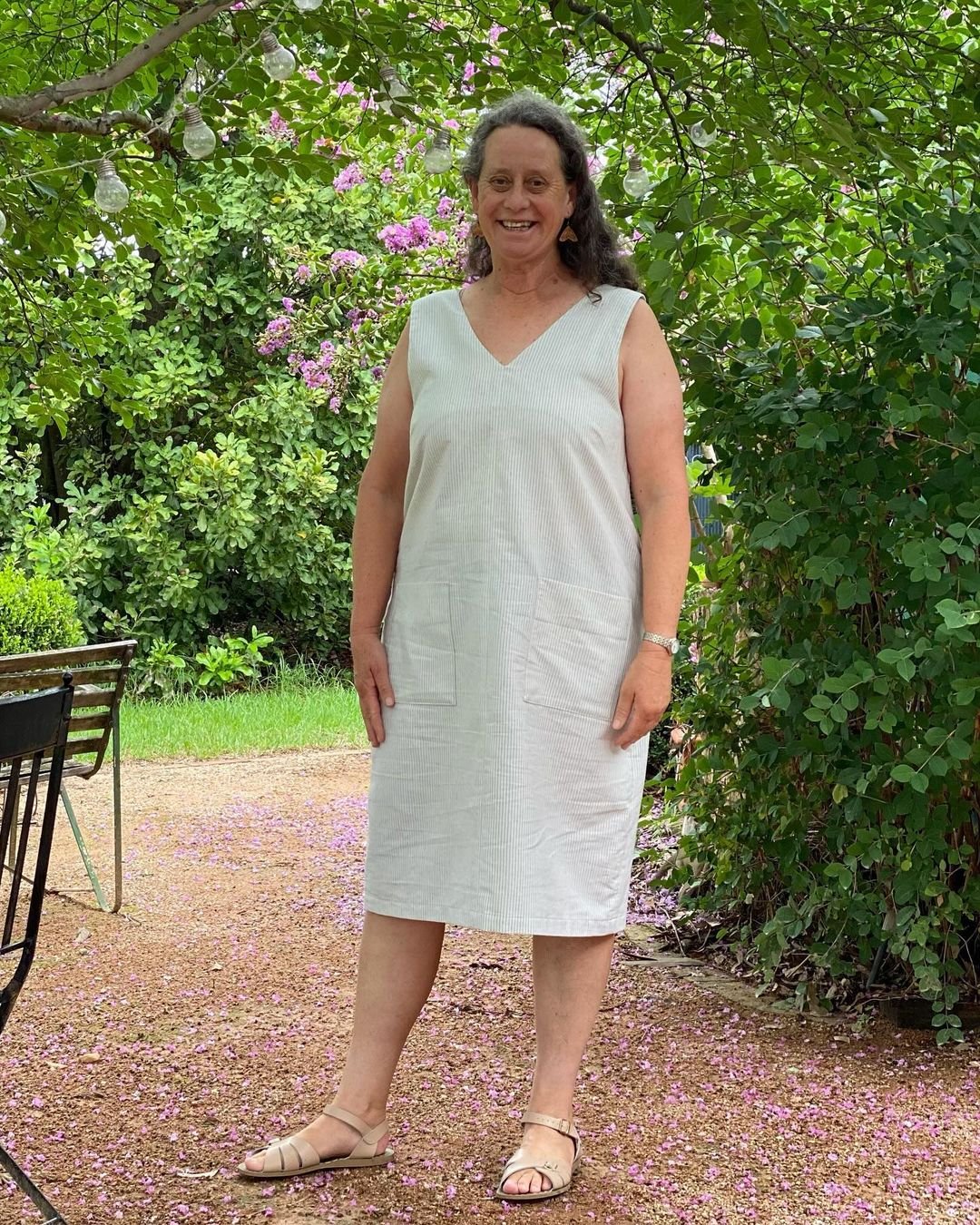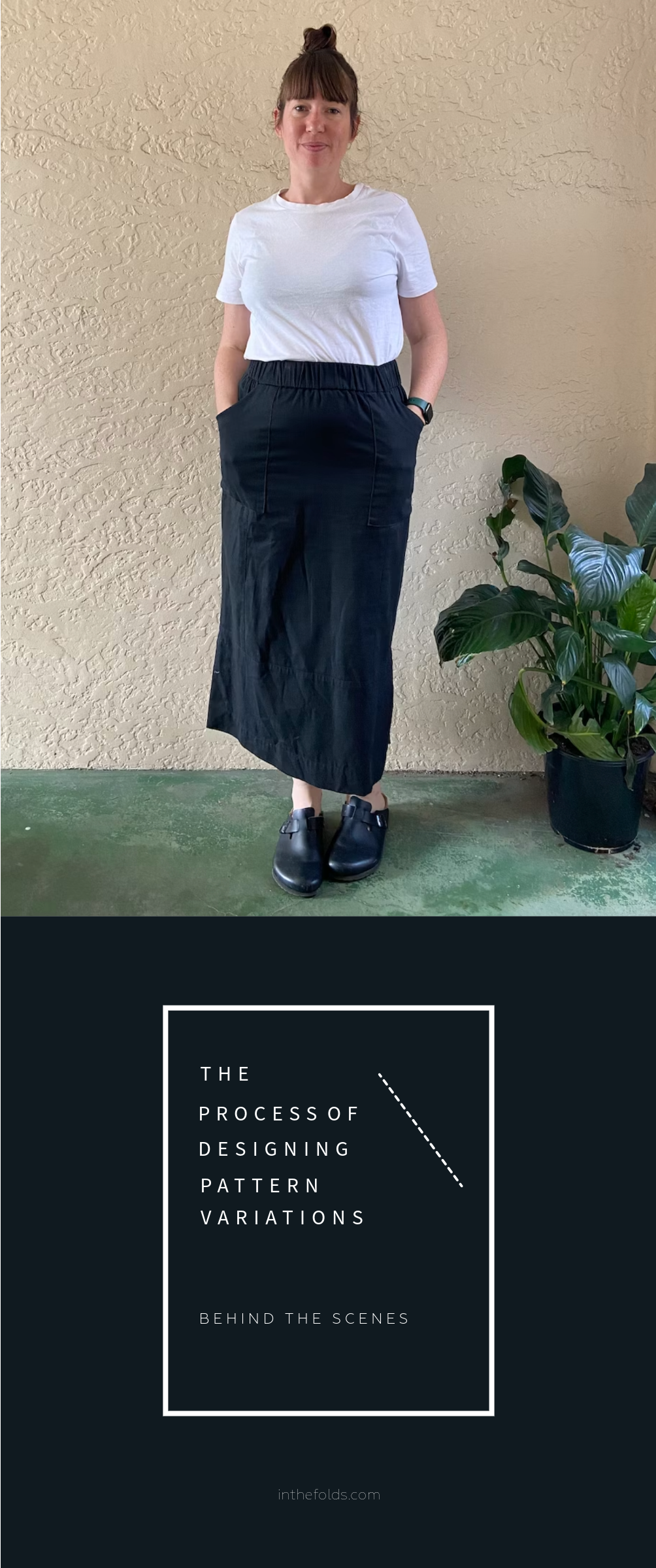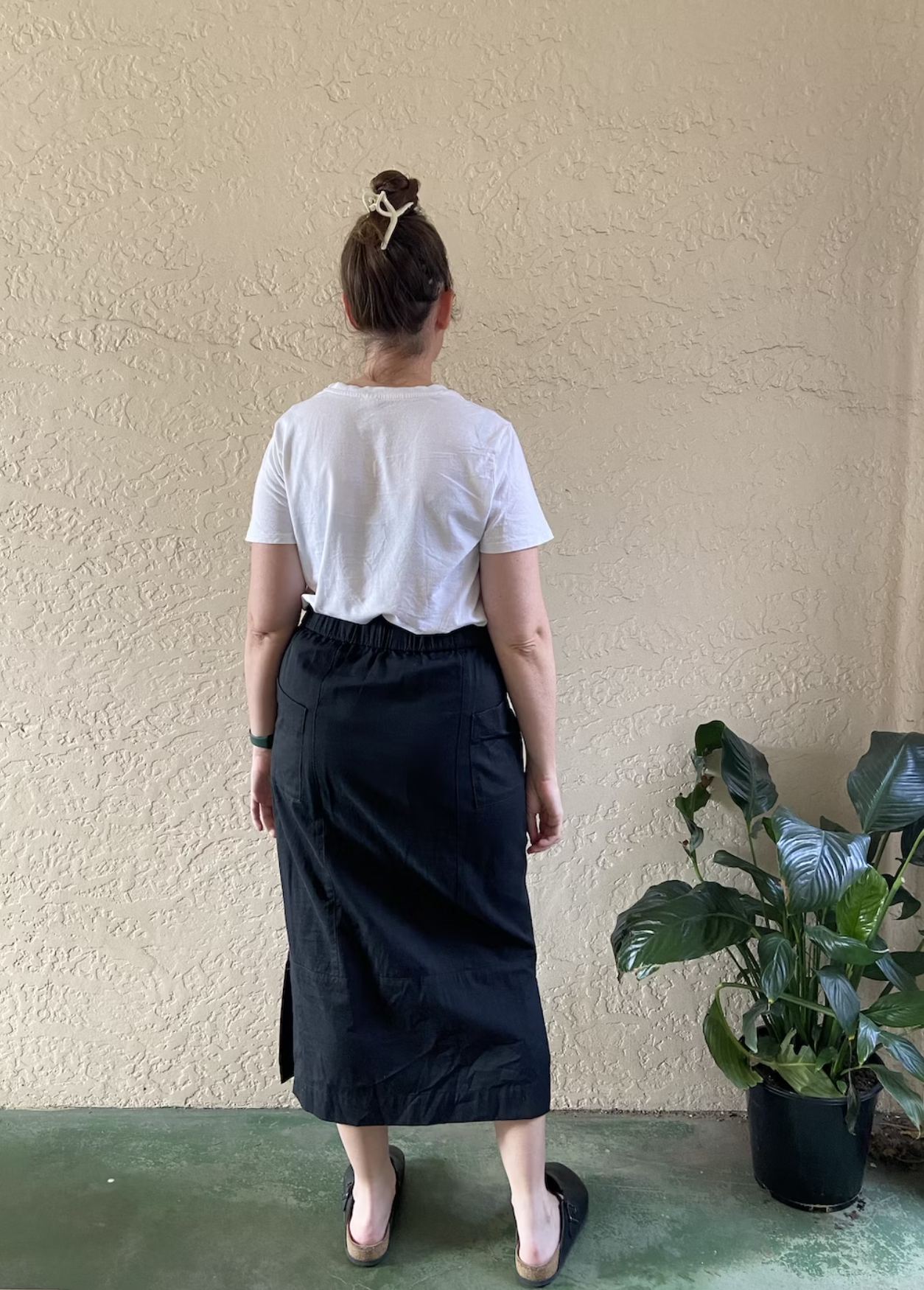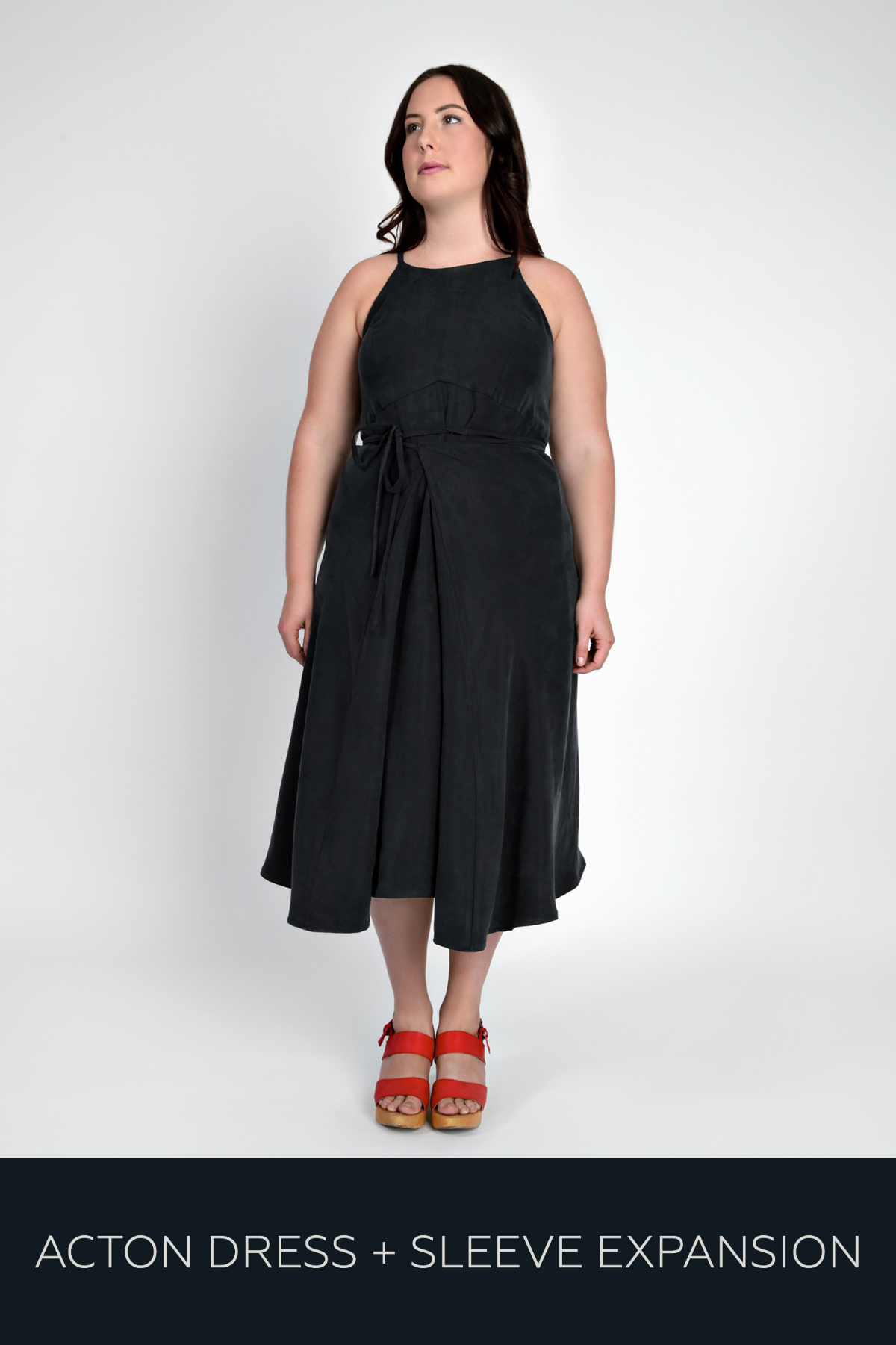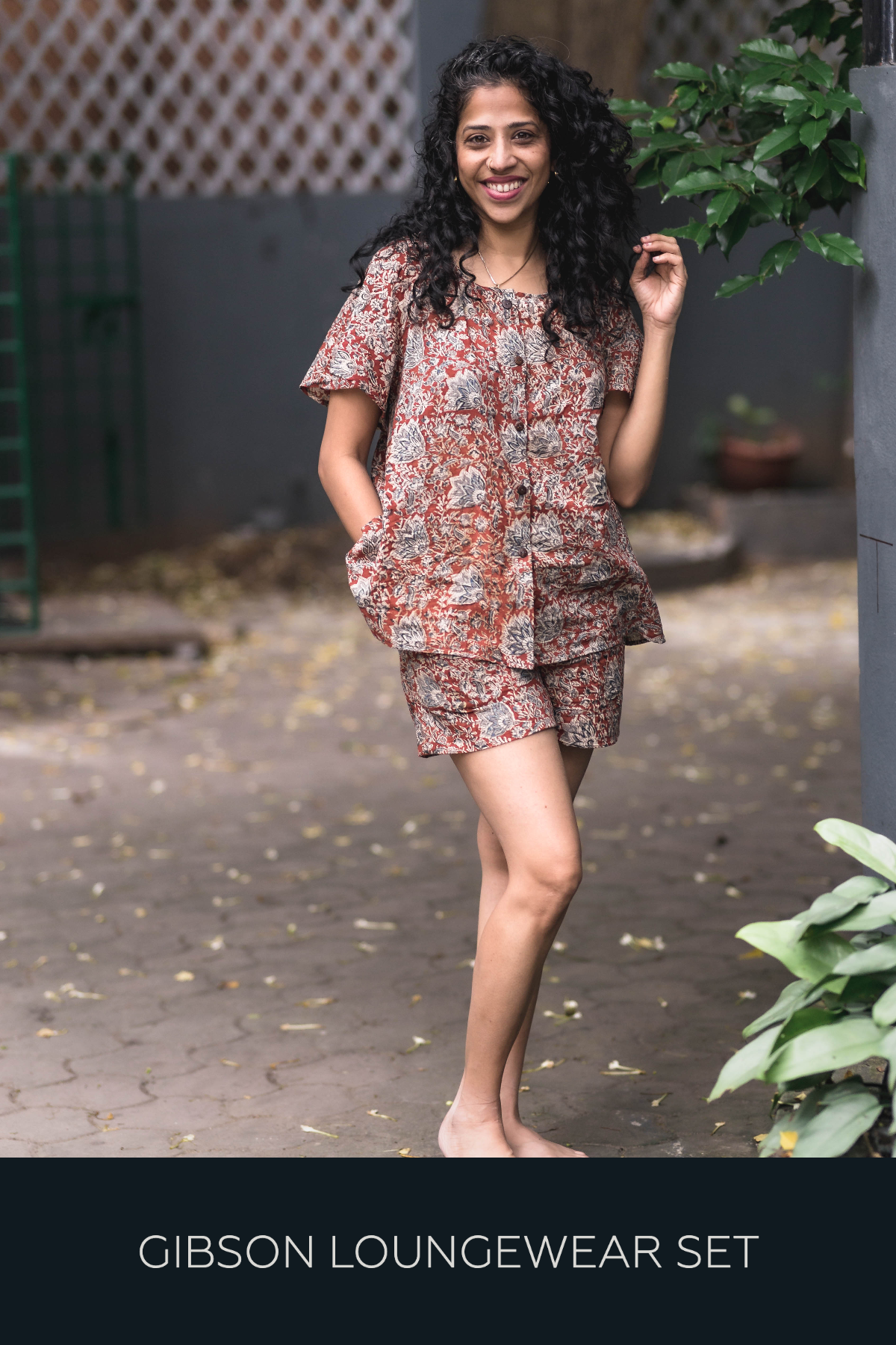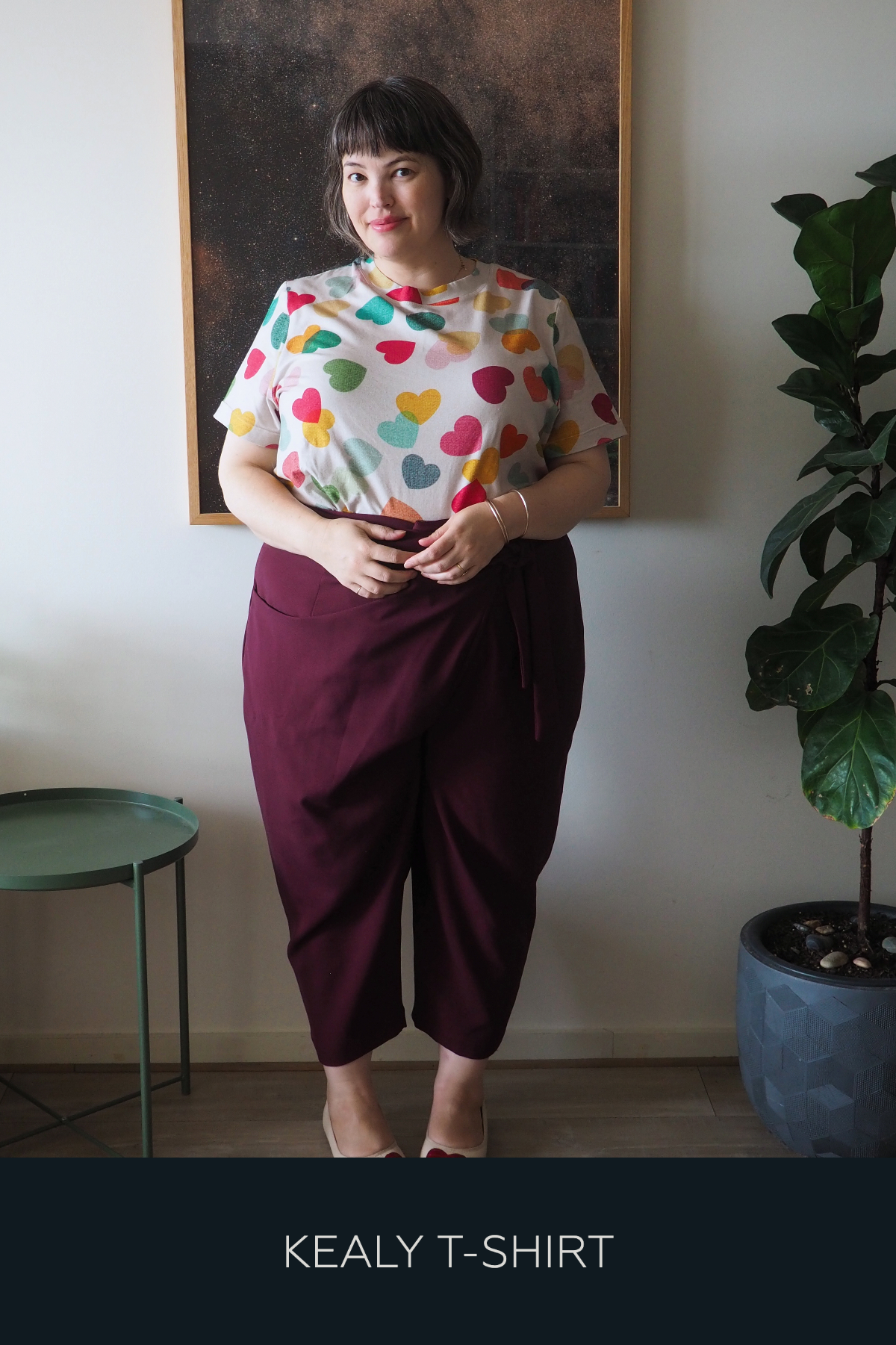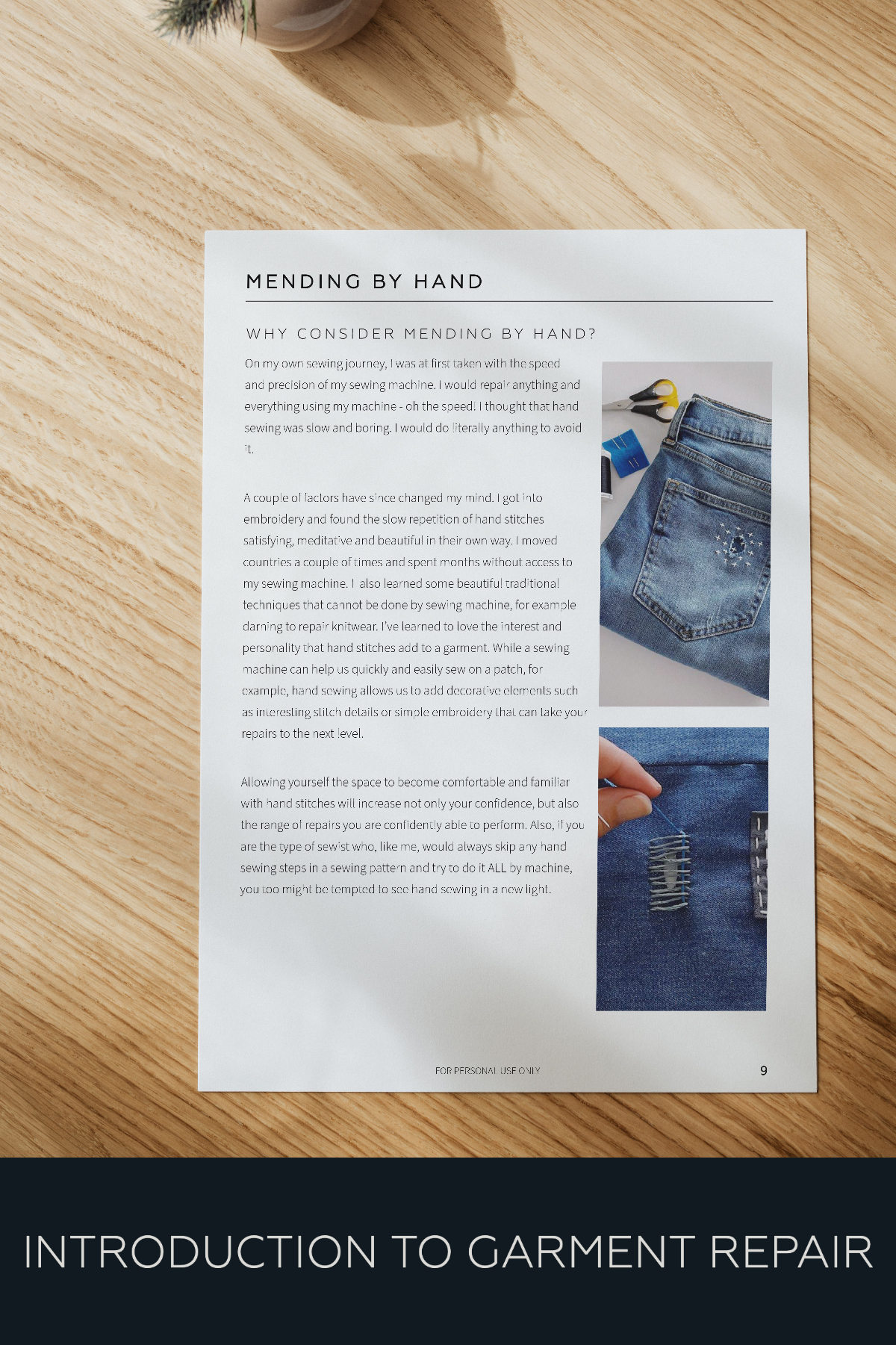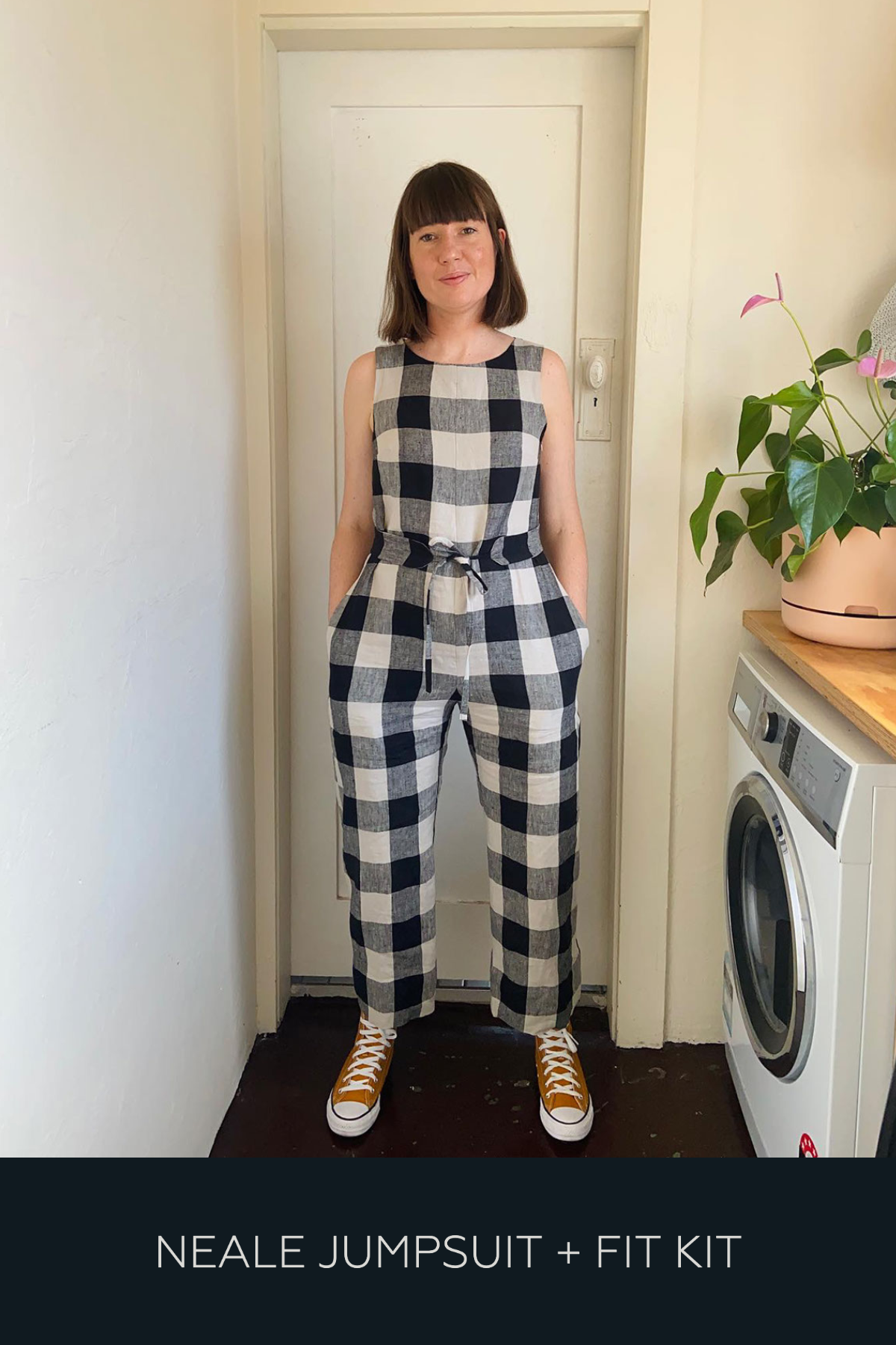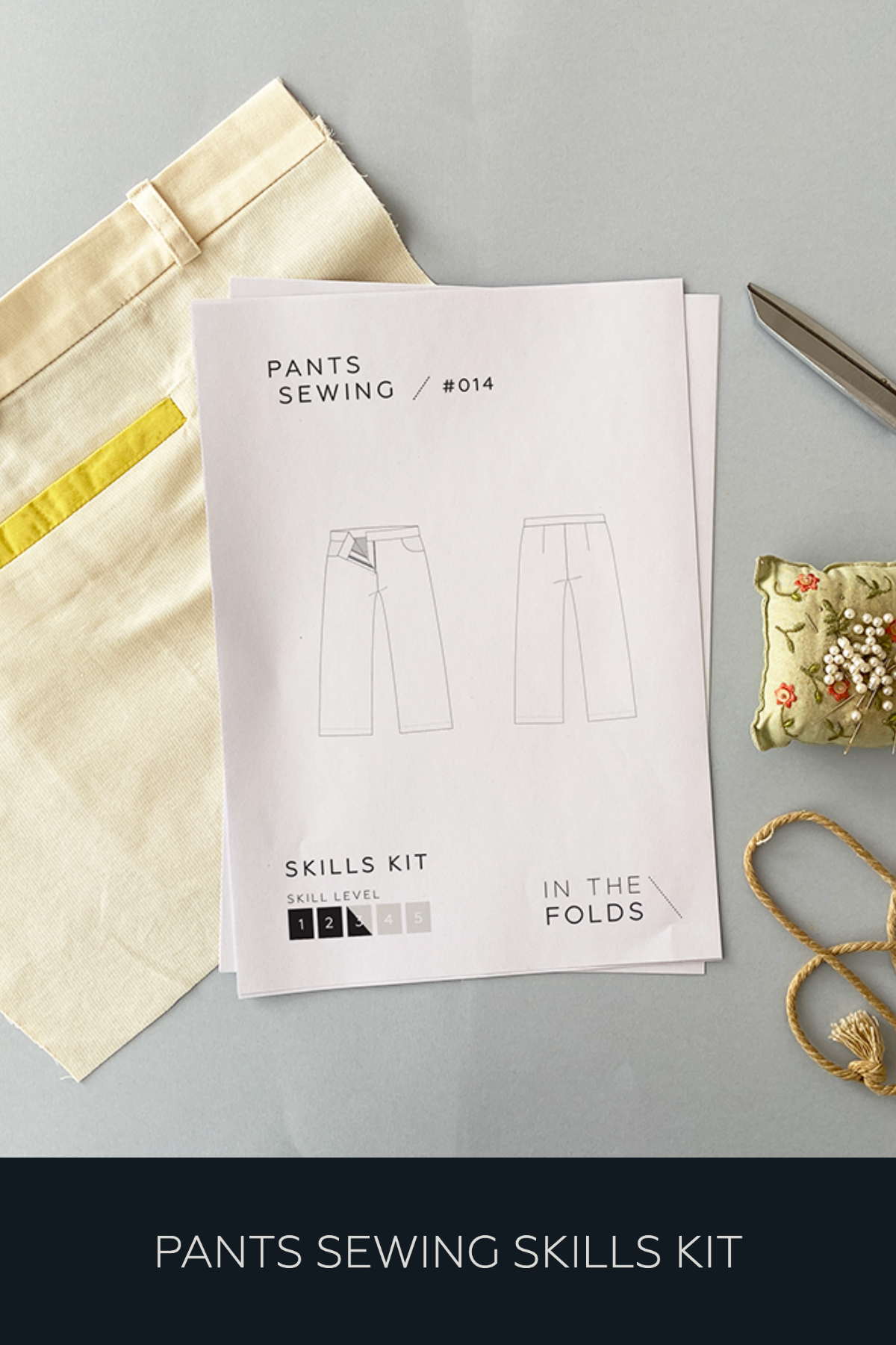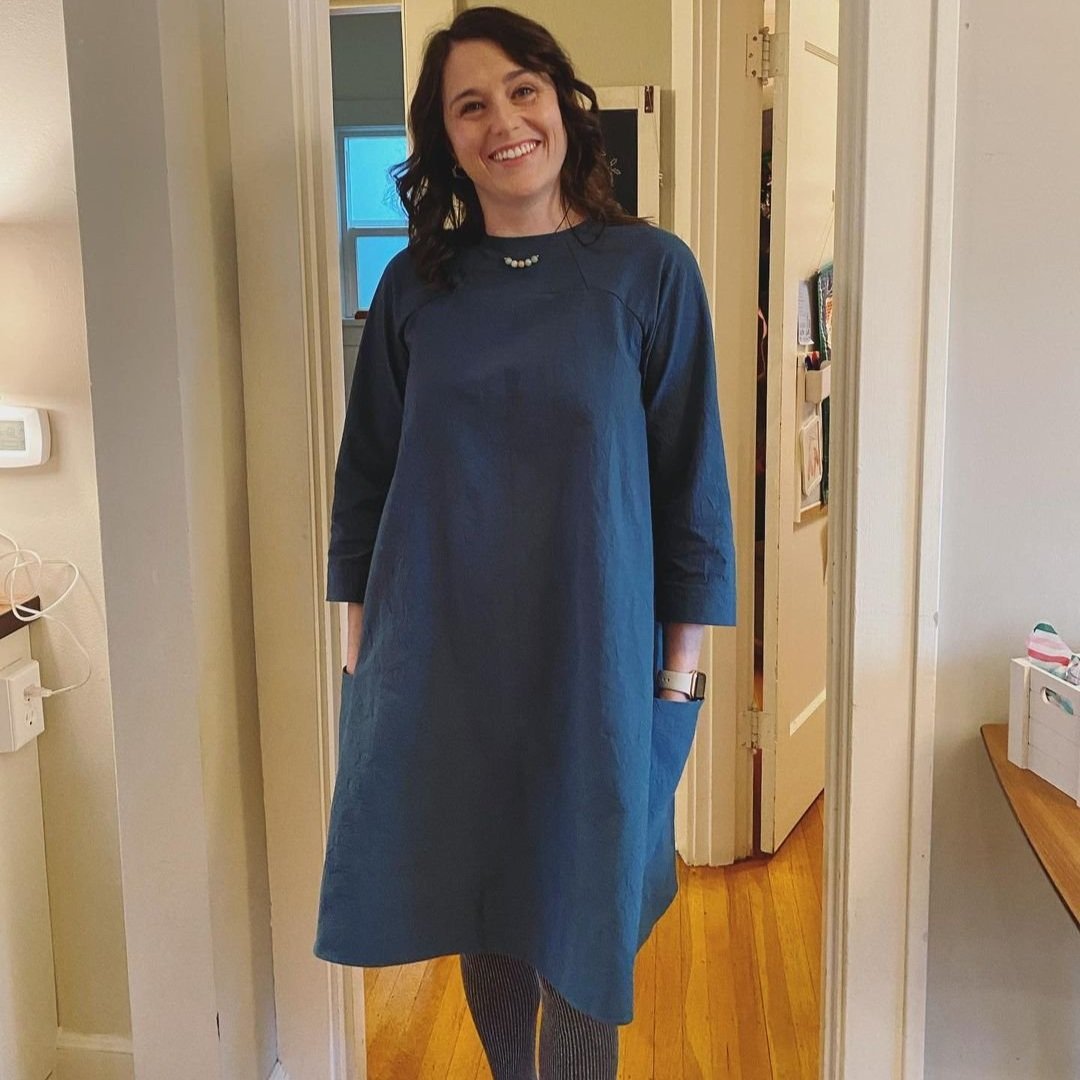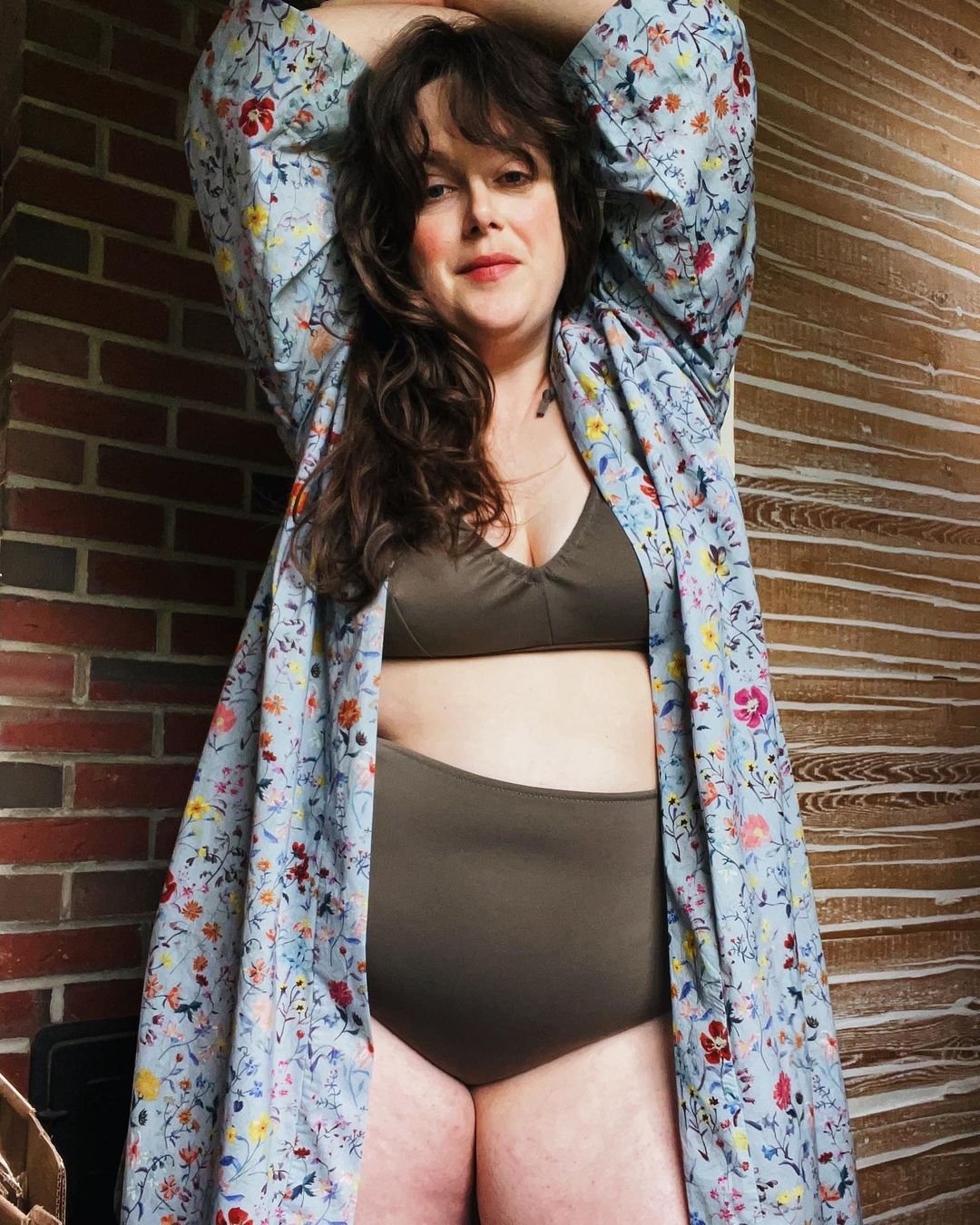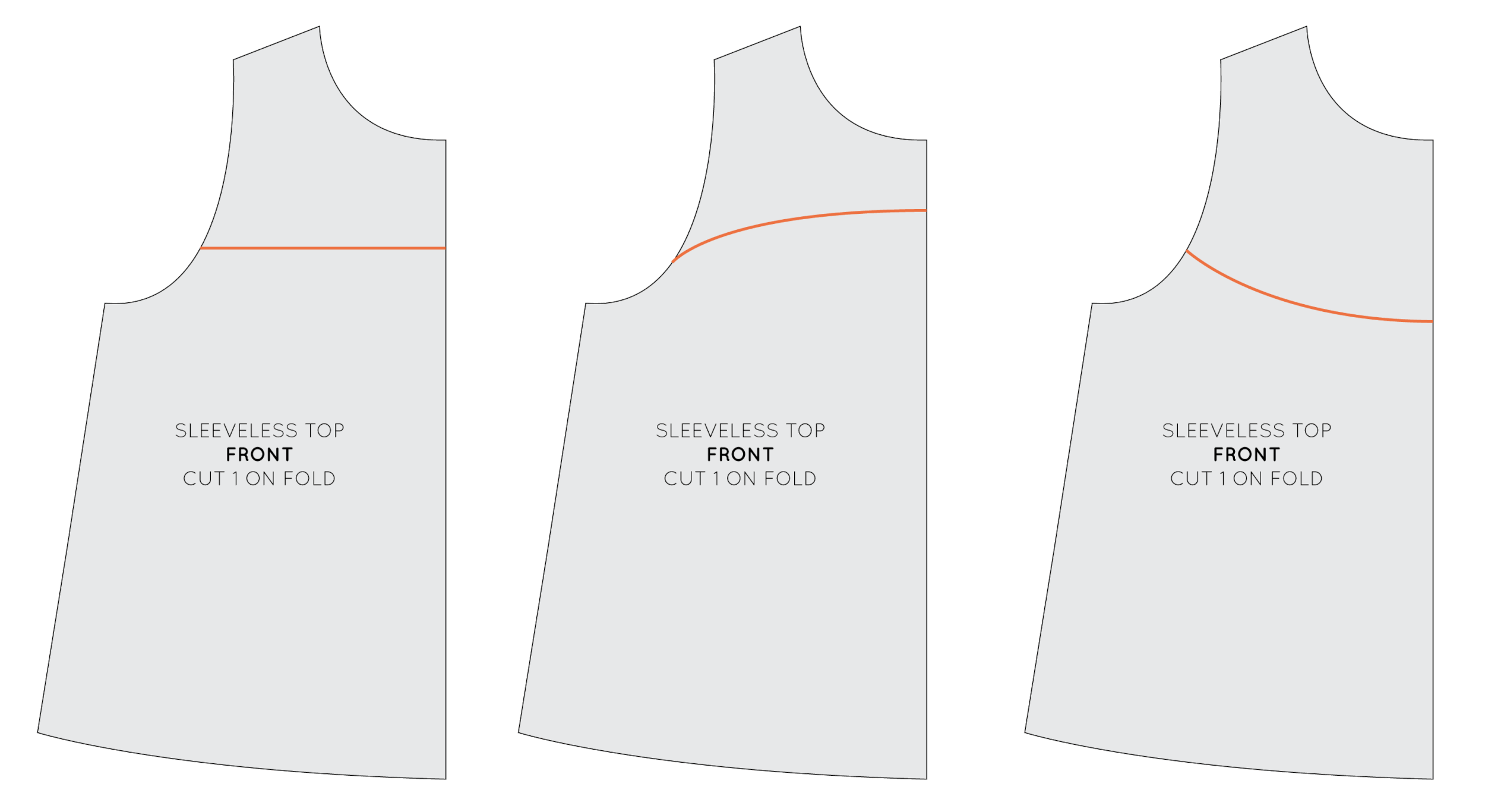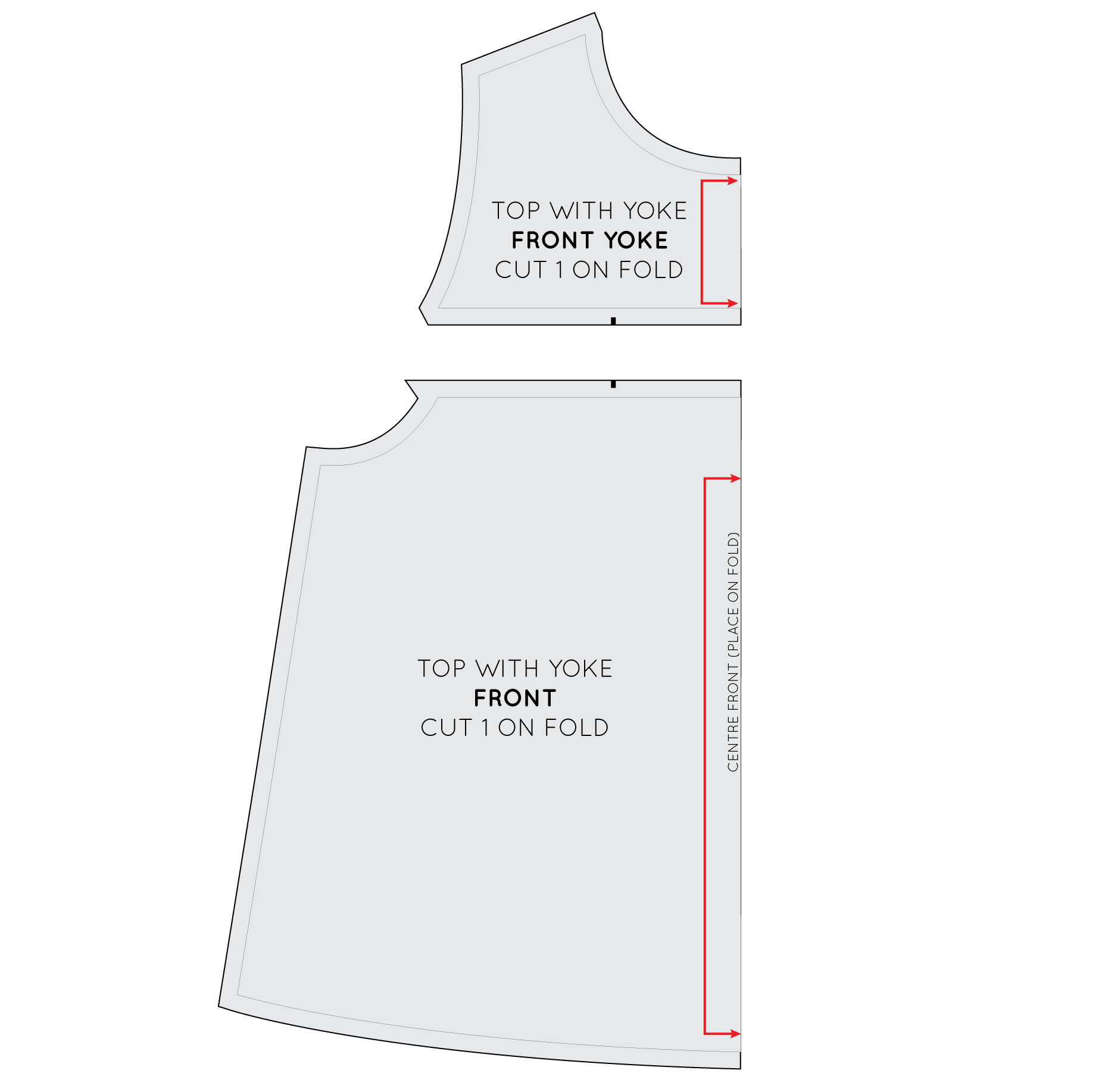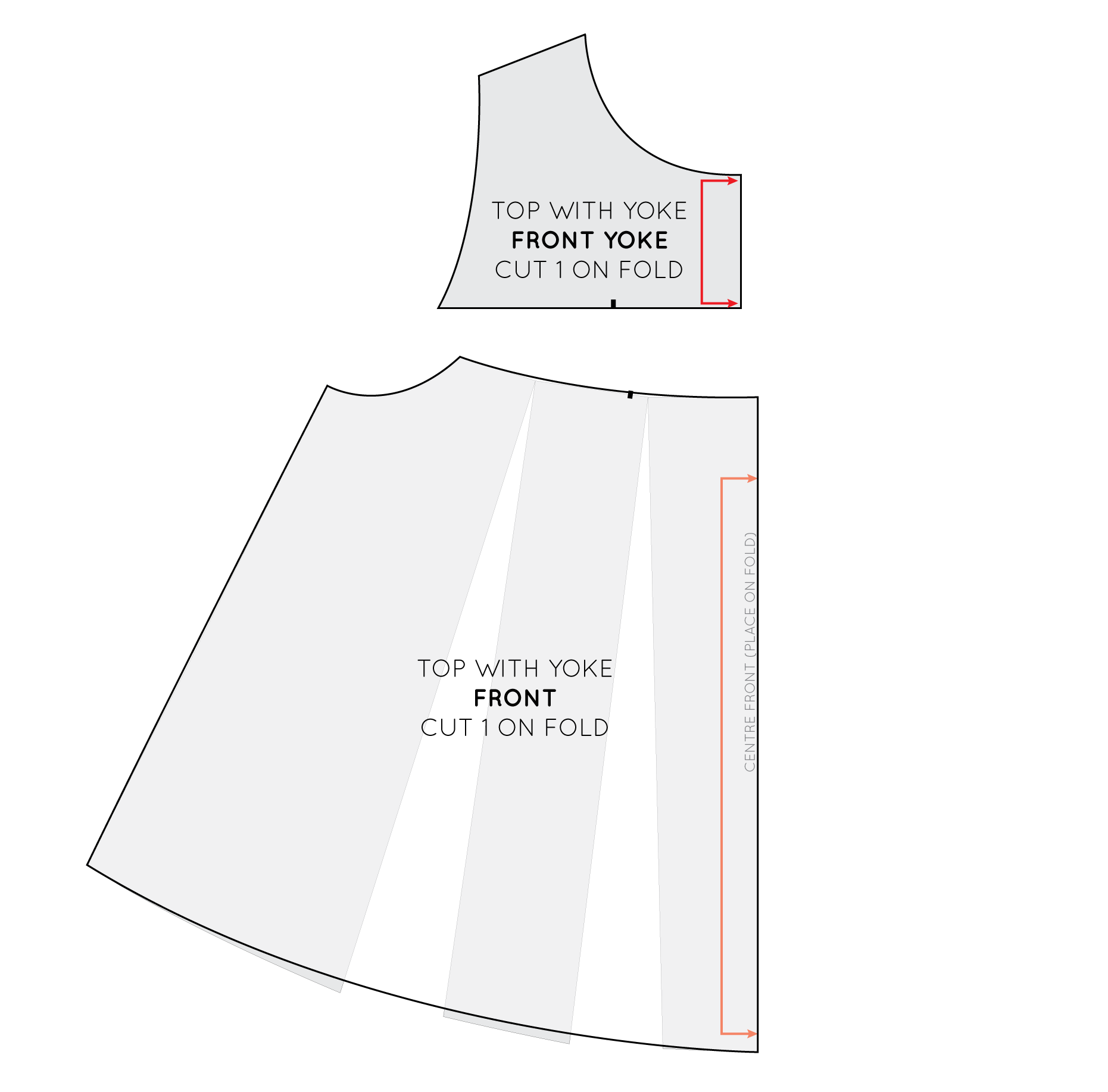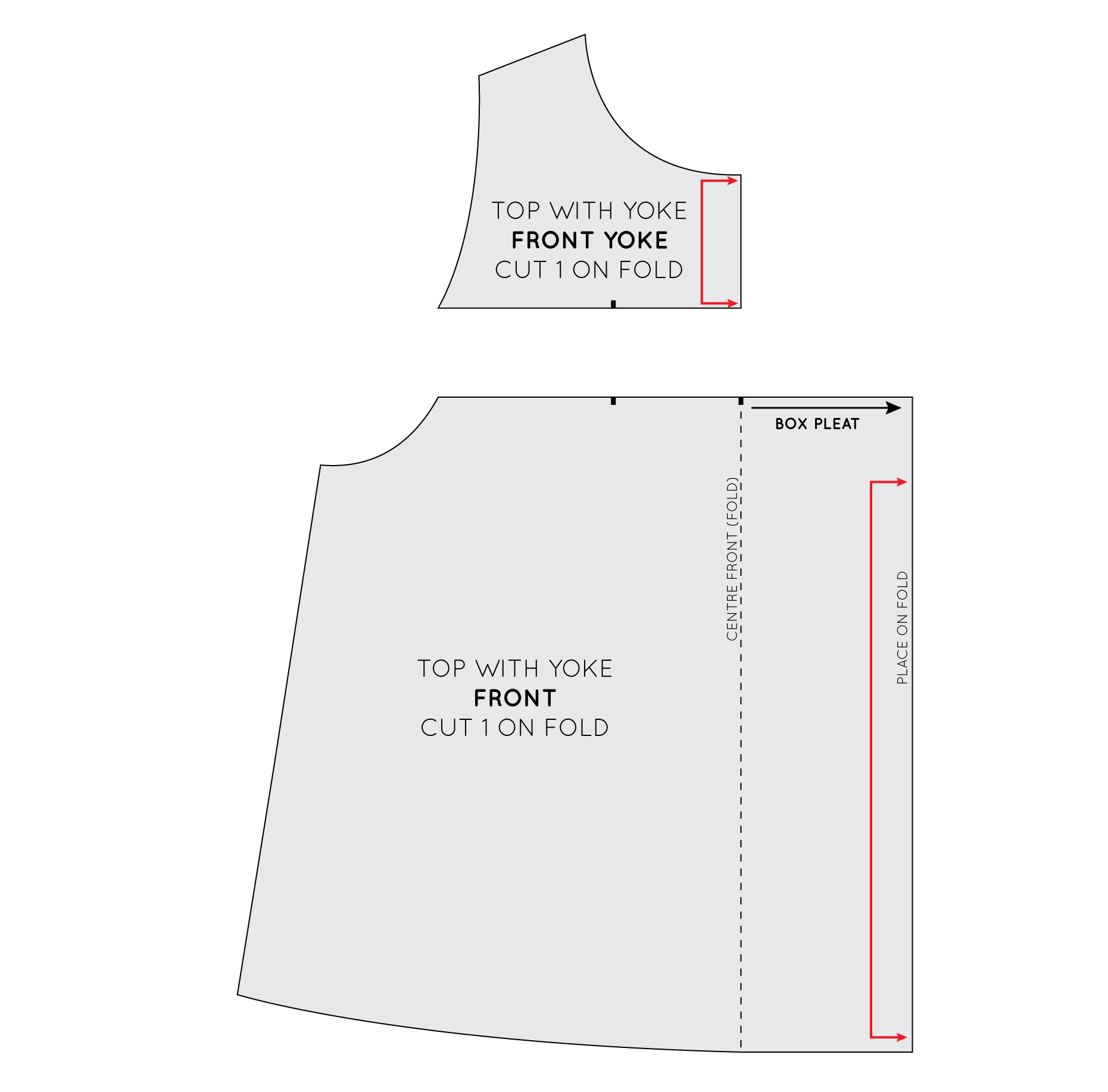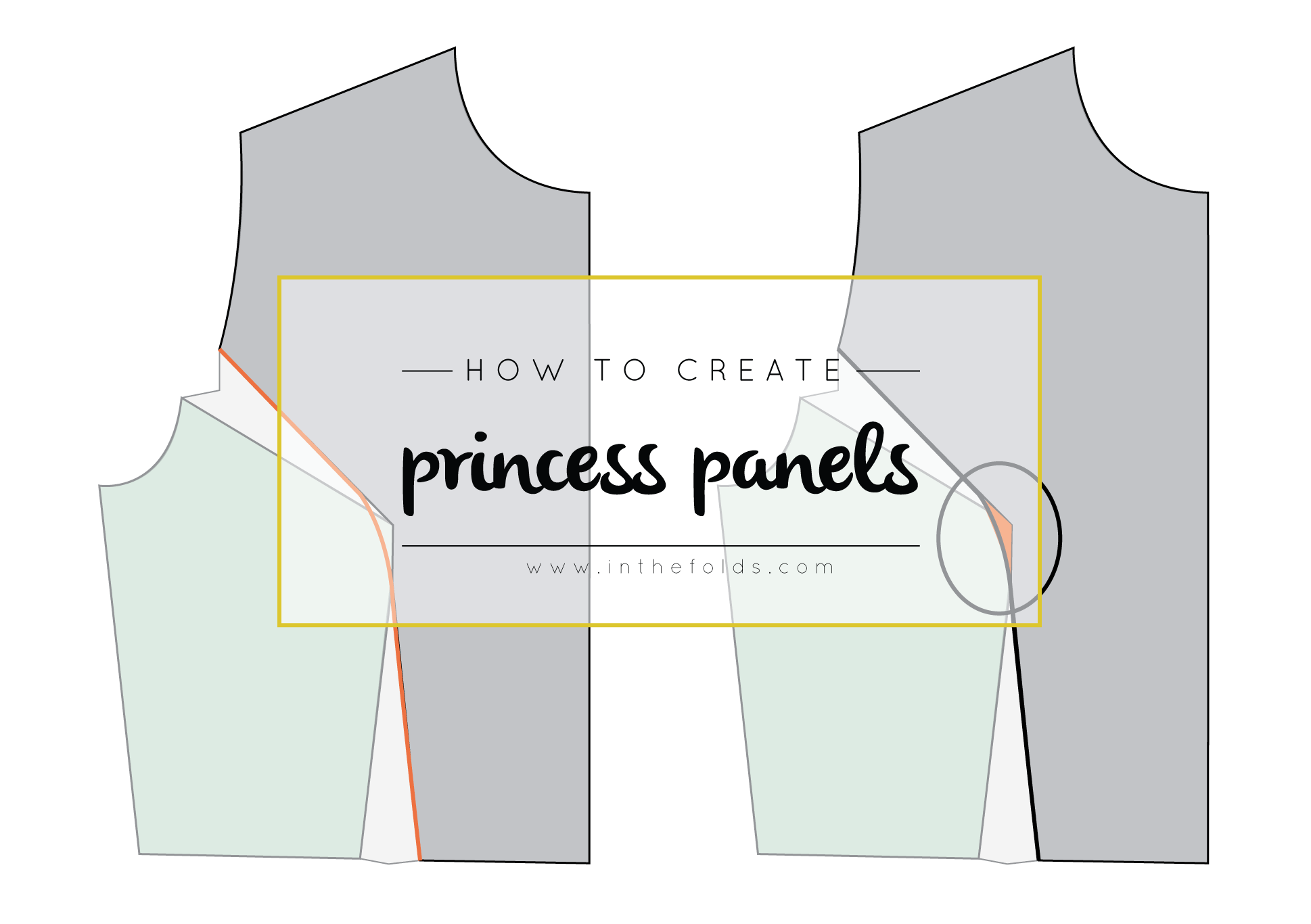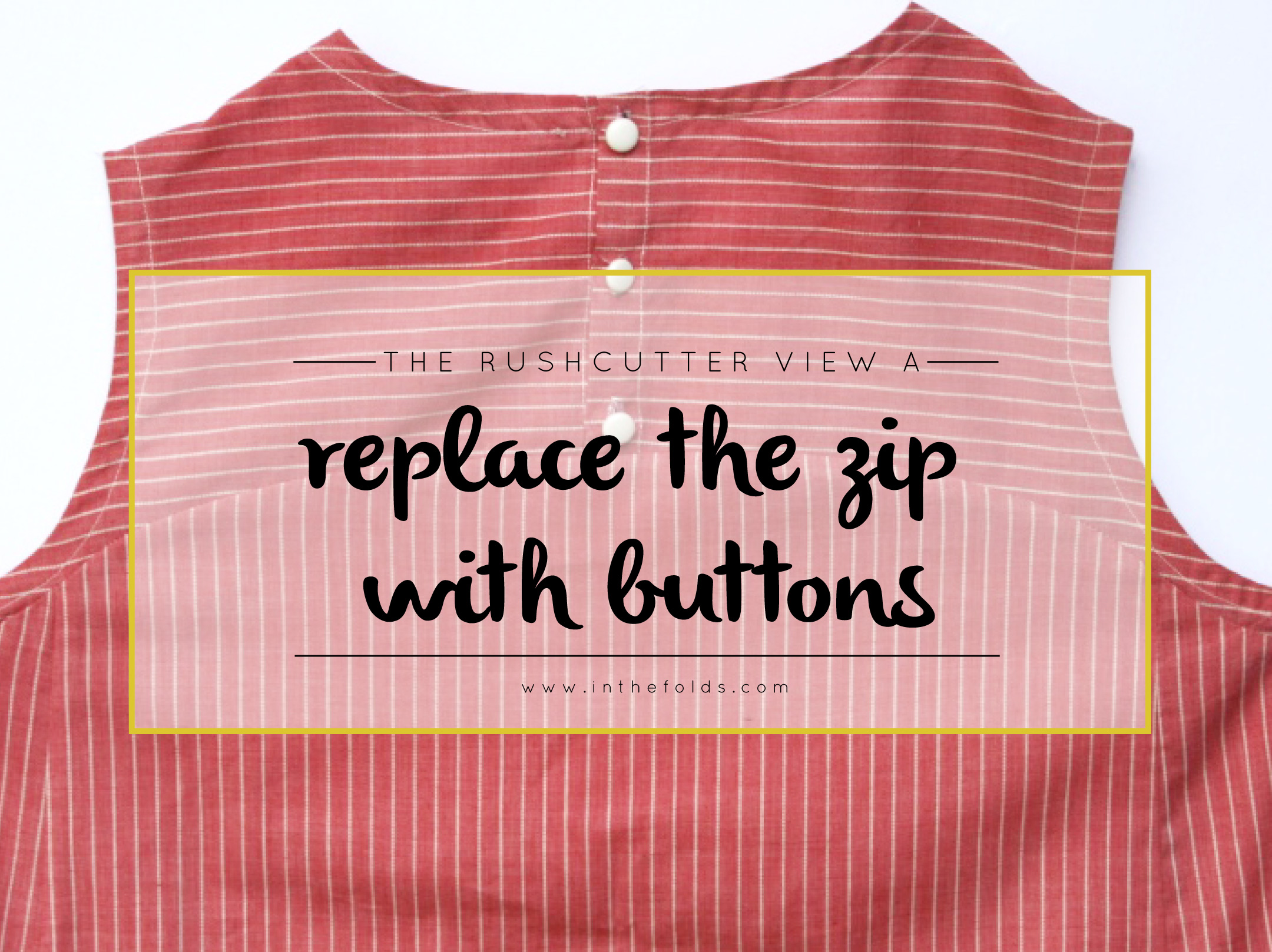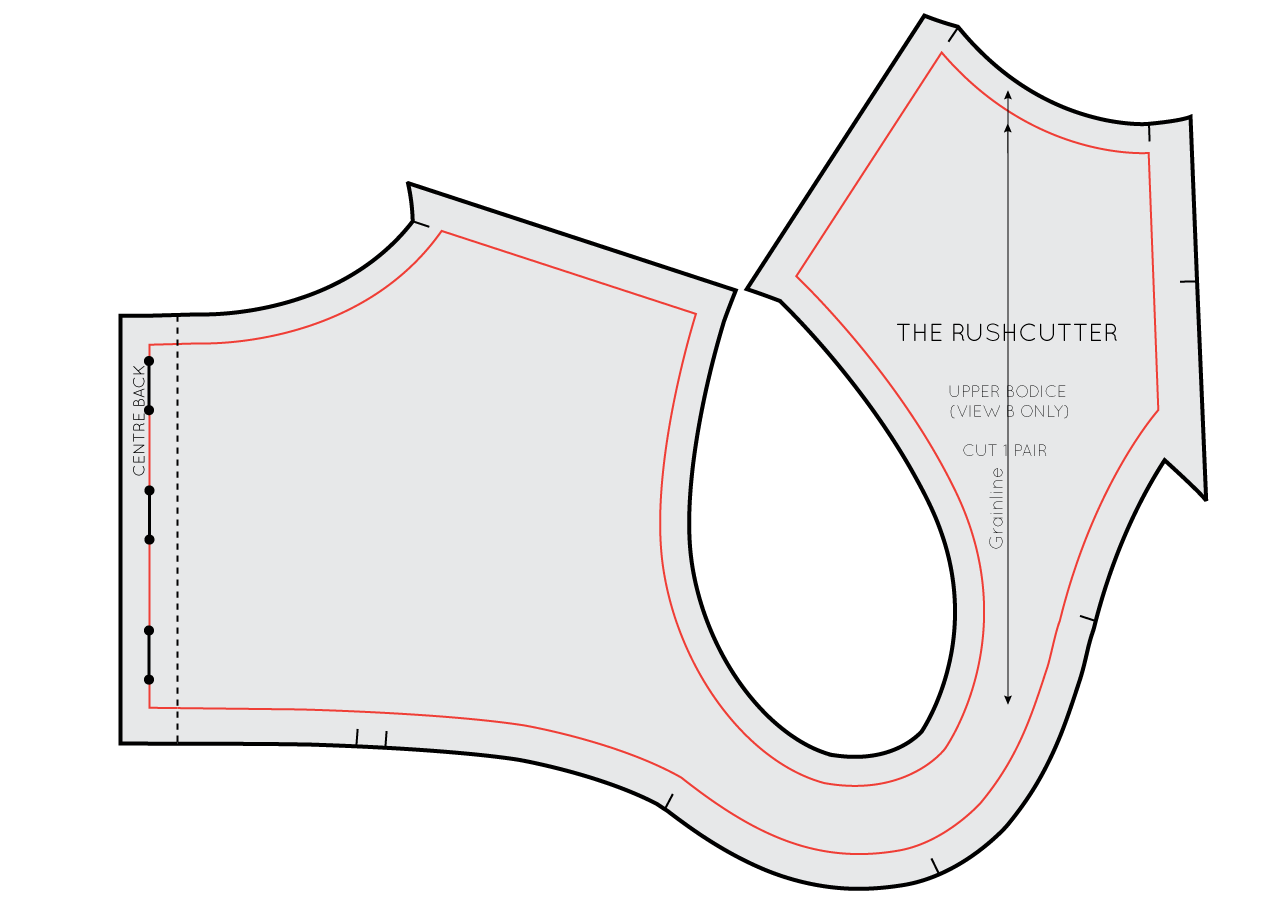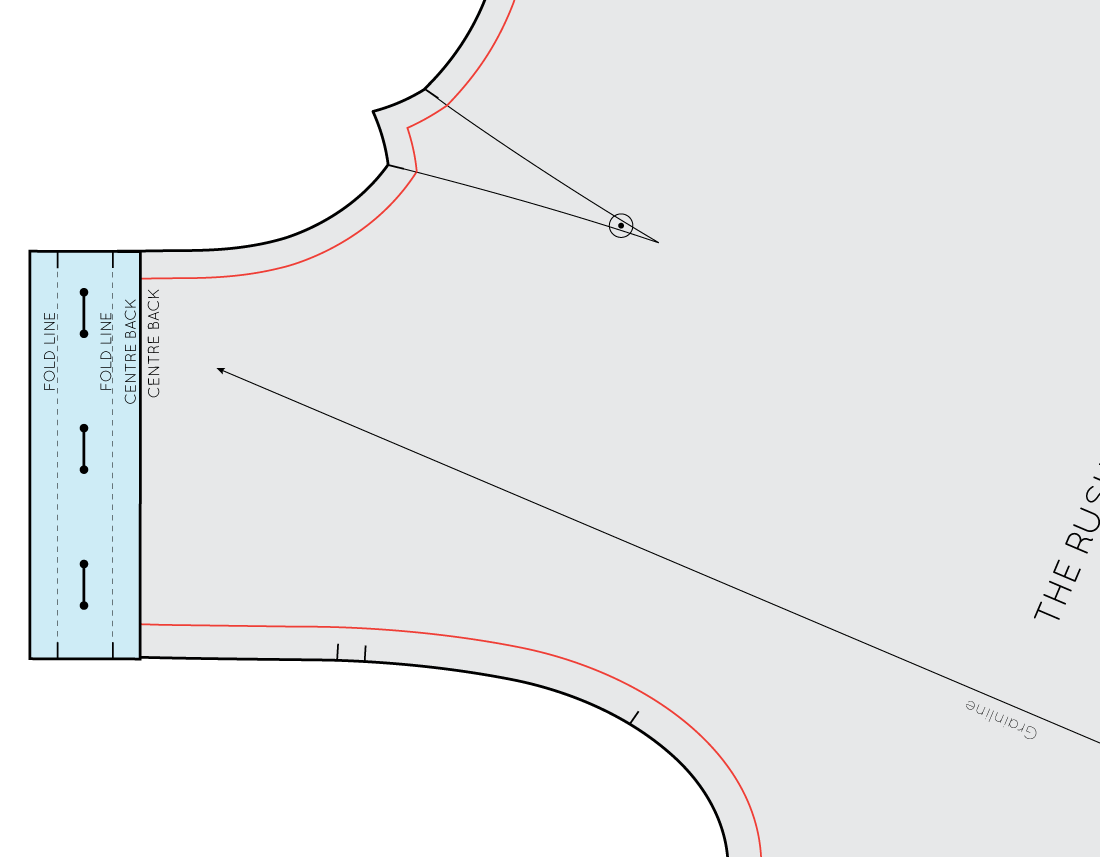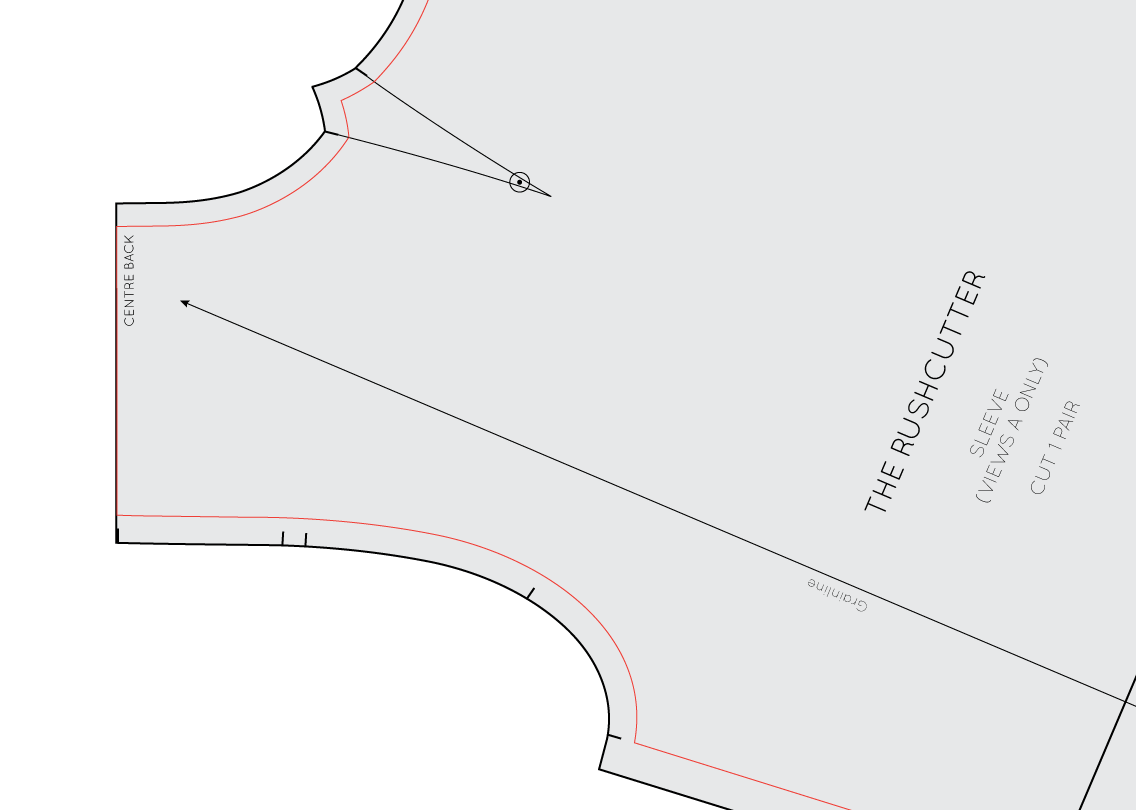As you’ve probably heard, the Collins top pattern was the starting point for this month’s Elwood dress pattern. After releasing the Collins top pattern back in 2017, I knew the design still had more to offer, so while planning for Curated by ITF projects I was excited to get back to it and see if I was right.
In this post I’m sharing the design’s progression from Collins to Elwood, and explaining my thoughts as I go because I thought you might like a ‘fly on the wall’ experience! We shared this in our private Curated by ITF community and the feedback that it was really helpful. I’d love to hear your thoughts and questions too so be sure to leave a comment.
Using Clo3d to brainstorm
I drafted the Elwood design using Clo3d (a 3D pattern drafting software) because I had a good starting point with the Collins top. I prefer not to use Clo3d unless I’m starting from a block or pattern I know is accurate, as things can easily go wrong. I felt safe using it for this project however, because the Collins top is a finalised pattern and I knew I would still sample the pattern and fit on an actual person. So, for further exploration of the Collins top design, Clo was perfect.
Here are some of the ideas I explored…
Can you see which two patterns I mashed up to create this design? It's the Neale jumpsuit with Collins sleeves!
I really love this idea but got stuck on what to do for a closure. It would need a centre back zip which is not ideal as it can be tricky to get on and off.
I also wasn't sure how the panelled sleeves worked with the body of the jumpsuit that didn't have any panel lines, and I was also exploring a waist seam to see if it would improve the design.
Don't ask me why I thought it would be a good idea to have pants with a gathered waist! 🤦♀️ It's moments like these when I’m happy I've got the option to try out new things digitally and didn't waist a load of fabric making this toile!
Join Curated by ITF - find your new community!
If you're looking to be supported, motivated and inspired through your sewing journey our Curated by ITF subscription might be just what you're looking for.
As well as a monthly sewing project, you’ll gain access to our private member platform where you can receive feedback and advice from the ITF team and other experienced makers, participate in sew-alongs and make sewing besties all over the world!
Can you see that this one is where the Elwood sleeve starts taking shape? This is where I started creating the lantern sleeve. I was toying with putting elastic in the sleeve cuffs for a more dramatic shape, and this is actually something you could easily do if you wanted to!
At this point I started thinking about how it would work as a dress. I still really like the look of this and can imagine it in my wardrobe. I'm currently breastfeeding though, so unfortunately big sack-like dresses without openings are off the table for a little while!
It was at this point that I got clear about what I was designing. I had settled on the lantern sleeves and then went back to play around with the bodice shaping of the Collins top and added a skirt. There was still a bit too much ease at the waist which I ended up removing to slim it down a bit - about 9cm from each side seam in the end!
As you can see, I hadn't yet added the back yoke seam or the panel lines to the skirt, and there was still a centre back seam in the bodice.
Seam lines added! It was at this point that I felt really good about the initial draft and printed it out to check the fit on a fit model and see how it sewed up.
DESIGNING THE ELWOOD DRESS WITHOUT A DIGITAL PROGRAM
The thing is though, you don’t actually need a digital pattern design program to do this kind of work yourself. Of course, doing it manually is going to take more time, and there will be a lot of back and forth between pattern designing and making toiles and then trying again and tweaking and testing, but this is how it’s been done for hundreds of years. It’s also the fun part, and it helps you learn. I’m still amazed at what I can learn by playing around with different alterations and trying different things. The reason digital pattern making works as part of my process is that I already know how to draft by hand, so it speeds up the process. You can read more about how I find the balance between digital and physical patternmaking here.
Because patternmaking skills are exactly what we teach in Curated by ITF, I took some time to create some videos for our subscribers that show exactly what alterations you would make to the Collins top pattern to create the Elwood dress if you were doing it manually. So, I thought I’d share a couple here too.
Making the Elwood dress pattern your own
Already we’ve had Curated by ITF subscribers can make the Elwood dress their own by hacking and we LOVE that they’re always looking to take a design that next step further. We talked about this in last week’s post which you can read here, but here’s a couple of finished Elwoods that have had some subscriber love added to them…
Here is Shuay’s Elwood make which she hacked into an Elwood top with a cute peplum.
Michelle added some ties to the waistline that allows her to add more shape to the design. Such a simple, but effective, way to make a design your own!
Another member, Martina, explained that she’s not really into dresses and has been sharing her progress as she hacks and toiles her way to turning the Elwood dress into something that suits her style more. It’s a fascinating process and we’re loving working through it with everyone.
So, what do you think? Is patternmaking something you’ve been too scared to try? Do you wish you had somewhere you could go to get your questions about patternmaking answered? If your answer is yes, then Curated by ITF would be a great place to start. We have so many past issues you can work through to help you slowly build your skills. You can also check out our free patternmaking tutorials here. Otherwise, just come and join us while we make the Elwood together!
Happy patternmaking!
Emily


